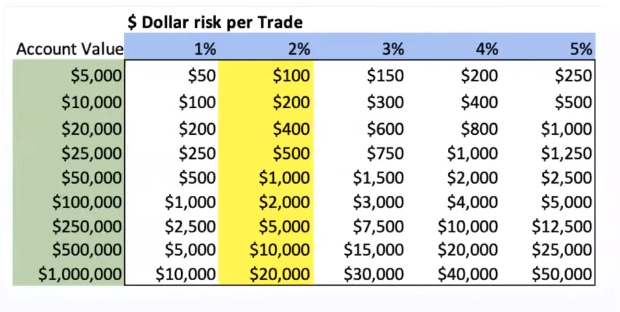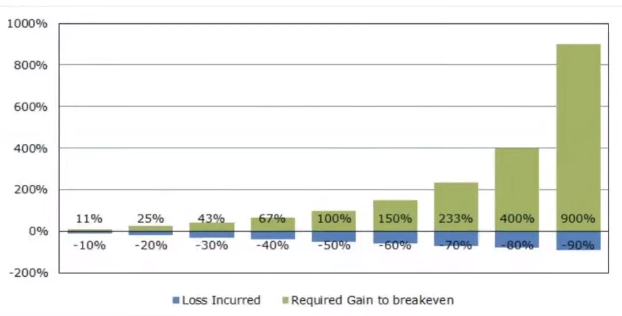Risk and Money Management in Trading

There is always a level of risk when investing in securities, whether it be options, fixed income or forex. The risk associated to each asset class depends on the characteristics of the asset itself and how it is affected by the factors that relate to it. For example, fixed income is generally deemed a very safe asset class (depending on the credit rating of the bond) and by definition, usually provides investors with a fixed amount of income during the life of the bond or at expiry. Forex on the other hand is considered riskier due to its volatility and unpredictable nature. All asset classes carry a certain level of risk associated to them and equities are no different. While it is important for traders to be able to correctly speculate on the direction that a stock may move in, the final result is never a certainty and traders have no control of what direction the stock will move in after the trade is placed. This leaves their money at the mercy of the market.
So, what do traders have control of? While risk and money management may not be as exciting trading itself, it is just as important as it is something a trader can actively manage. Good risk management determines whether the trading account will live to see another day. Here are some good tips and guidance relating to risk and money management in trading:
The Golden Rule of Risk Management
Never risk more than 2% of your trading account in a single trade. It is a simple, yet effective rule to follow. While gains are out of a trader’s control, losses are not. Effective risk and money management can ensure the trading account remains afloat even after consecutive losses. The table below shows the dollar risk per trade based on the size of the account:

Understanding Exponential Gains and Losses
When an account grows, the returns are compounded. This means that if an $10,000 account grew 5% from a trade to $10,500, a further 5% return from a future trade will result in $525 added to the account which is $25 more than the 5% return from the $10,000 account. Consecutive winning trades result in exponential growth of an account. However, consecutive losses result in an exponential decline. Based on the risk profile of a trading strategy, consecutive losses can actually be quite common. Proper risk management is needed to curb the effects of the exponential decline and ensure your account lives to trade another day!
Gains Required to Break Even
The effects of consecutive losses are shown in the graph below. The graph shows that after a loss has occurred, it takes a higher return (as a percentage) just to break even. For example, if a $10,000 account experiences a few consecutive losses and the account has a drawdown of 20% to $8,000, a 25% gain is required to get back to $10,000 (25% of $8,000 = $2,000).

Number of Consecutive Losses Required to Blow Up your Account
Risking less per trade allows for a higher threshold of consecutive losses before the account is blown. Risking 10% a trade only requires 10 consecutive losses to blow up the entire account while risking 2% per trade requires 50 consecutive losses (which is quite unlikely). Although experiencing even 10 consecutive losses can be seen as unlikely, they can still happen. Consider a trader placing a number of trades on stocks in the same sector. If the sector does badly, all the trades will do badly as well. It is important to diversify trades across different sectors, expiration dates and direction (long/short).
Probability of Consecutive Losses
The table below shows the probability of having consecutive losses based on what strategy is used. Strategies with a low win rate but high reward have a greater chance of experiencing consecutive losses while strategies safe strategies with a low win rate and low reward have a much smaller chance of experiencing consecutive losses.

A general rule of thumb is to plan for having at least 5-6 consecutive losses at some point. The goal is to keep portfolio drawdown below 25% even after 5-6 consecutive losses:
(% risked x consecutive losses) < 25% of portfolio
For example. If a trader incorporates 2% risk per trade and experiences 5 consecutive losses, the portfolio will experience a drawdown of almost 10% ($10,000/(1+0.02)5 = $9,057.97.
Summary
Risk and Money Management may not have the same excitement as speculating on stocks and executing trades, however, it is what determines long term gains for a trader. By sticking the Golden Rule and only risking 2% per trade, the probability of consecutive losses blowing up your trading account remains very small. Other ways to reduce the chances of experiencing consecutive losses is to diversify trades and reduce the correlation of your open positions.
The information provided on this website, including financial and economic data, quotes and any analysis or interpretation thereof, is provided solely for information purposes and shall not be construed in any jurisdiction as providing any advice or recommendation with respect to the purchase or sale of any derivative instrument, underlying security or any other financial instrument or as providing legal, accounting, tax, financial or investment advice. Bourse de Montréal Inc. recommends that you consult your own advisors in accordance with your needs before making decision to take into account your particular investment objectives, financial situation and individual needs.
All references on this website to specifications, rules and obligations concerning a product are subject to the rules, policies and procedures of Bourse de Montréal Inc. and its clearinghouse, the Canadian Derivatives Clearing Corporation, which prevail over the content of this website. Although care has been taken in the preparation of the documents published on this website, Bourse de Montréal Inc. and/or its affiliates do not guarantee the accuracy or completeness of the information published on this website and reserve the right to amend or review, at any time and without prior notice, the content of these documents. Neither Bourse de Montréal Inc. nor any of its affiliates, directors, officers, employees or agents shall be liable for any damages, losses or costs incurred as a result of any errors or omissions on this website or of the use of or reliance upon any information appearing on this website.
BAX®, CADC®, CGB®, CGF®, CGZ®, LGB®, MX®, OBX®, OGB®, OIS-MX®, ONX®, SCF®, SXA®, SXB®, SXF®, SXH®, SXM®, SXO®, SXY®, and USX® are registered trademarks of the Bourse. OBW™, OBY™, OBZ™, SXK™, SXJ™, SXU™, SXV™, Montréal Exchange and the Montréal Exchange logo are trademarks of the Bourse. All other trademarks used are the property of their respective owners.
© 2024 Bourse de Montréal Inc. All Rights Reserved.
